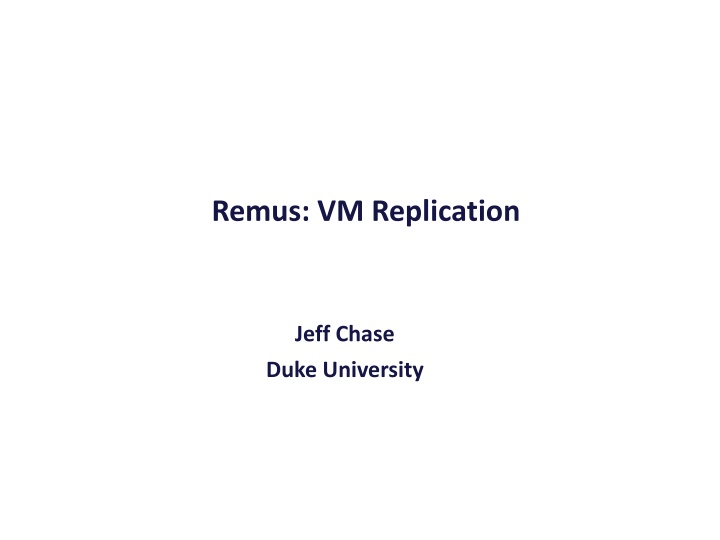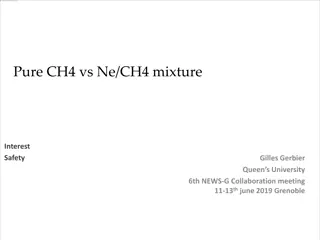
Efficient Virtual Machine Replication Techniques at Duke University
Explore the innovative VM replication techniques developed at Duke University, focusing on Remus and Recall systems for capturing modified pages and implementing transparent high availability for DBMS. Learn about Remus' epoch-based checkpointing process and how it ensures safe execution with consistent results for clients. Dive into the details of transparent HA for DBMS VMs, enabling failover to a standby server without code changes. Discover cutting-edge approaches in virtual machine management and replication.
Download Presentation

Please find below an Image/Link to download the presentation.
The content on the website is provided AS IS for your information and personal use only. It may not be sold, licensed, or shared on other websites without obtaining consent from the author. If you encounter any issues during the download, it is possible that the publisher has removed the file from their server.
You are allowed to download the files provided on this website for personal or commercial use, subject to the condition that they are used lawfully. All files are the property of their respective owners.
The content on the website is provided AS IS for your information and personal use only. It may not be sold, licensed, or shared on other websites without obtaining consent from the author.
E N D
Presentation Transcript
Remus: VM Replication Jeff Chase Duke University
Recall: virtual machines (VMs) Each guest VM runs a complete OS instance over an isolated sliver of host physical memory. Hypervisors support migration and suspend/resume. Both operations require an atomic snapshot (checkpoint) of VM memory state and register contexts. Capture modified pages and write them to snapshot. guest guest kernel host hypervisor (VMM)
Capturing modified pages How to do it? Recall the Address Translation Uses slides earlier. <Discuss.>
Remus checkpoints Snapshot the VM, but don t suspend it. Snapshot periodically as it executes. Snapshot concurrently: keep running while snap is in progress. Migrate the VM, but don t start the remote copy. Just load the snapshot on the remote host. Transmit live incremental checkpoints over the network. Update the remote snapshot/copy/instance in place. Remote host is a warm standby or backup replica. All checkpoints are atomic: they capture a point in time.
Remus Checkpoints Remus divides time into epochs (~25ms) Performs a checkpoint at the end of each epoch 1. Suspend primary VM 2. Copy all state changes to a buffer in Domain 0 3. Resume primary VM 4. Send asynchronous message to backup containing state changes 5. Backup VM applies state changes Periodic Checkpoints (Changes to VM State) Primary VM Backup VM Domain 0 Domain 0 Xen VMM Xen VMM Primary Server Backup Server 5 [Ashraf Aboulnaga RemusDB]
Transparent HA for DBMS VM VM Changes to VM State DBMS DBMS DB DB Primary Server Backup Server Primary Server RemusDB: efficient and transparent active/standby high availability for DBMS implemented in the virtualization layer Propagates all changes in VM state from primary to backup High availability with no code changes to the DBMS Completely transparent failover from primary to backup Failover to a warmed up backup server 6 [Ashraf Aboulnaga RemusDB]
Remus Checkpoints After a failure, the backup resumes execution from the latest checkpoint Any work done by the primary during epoch C will be lost (unsafe) Remus provides a consistent view of execution to clients Any network packets sent during an epoch are buffered until the next checkpoint Guarantees that a client will see results only if they are based on safe execution Same principle is also applied to disk writes 8 [Ashraf Aboulnaga RemusDB]





















